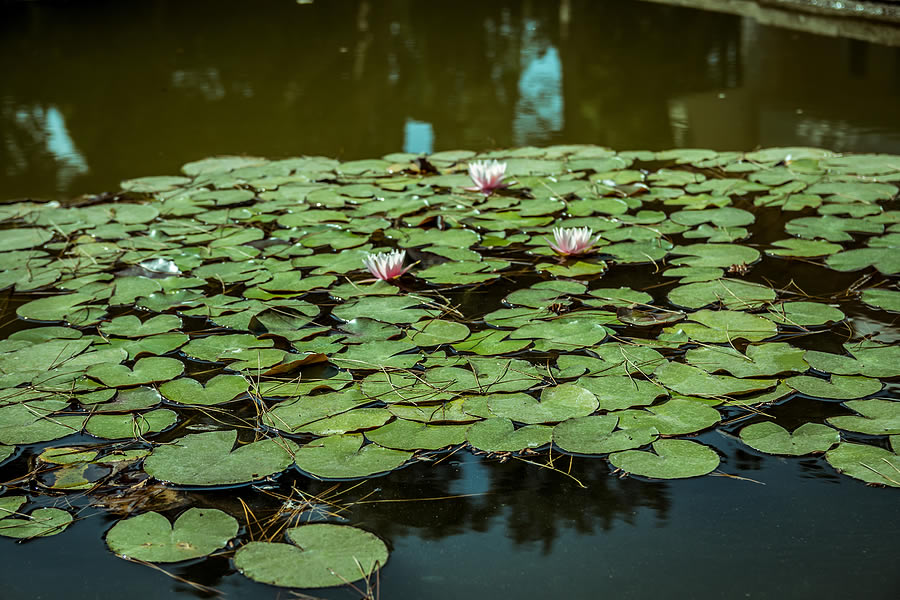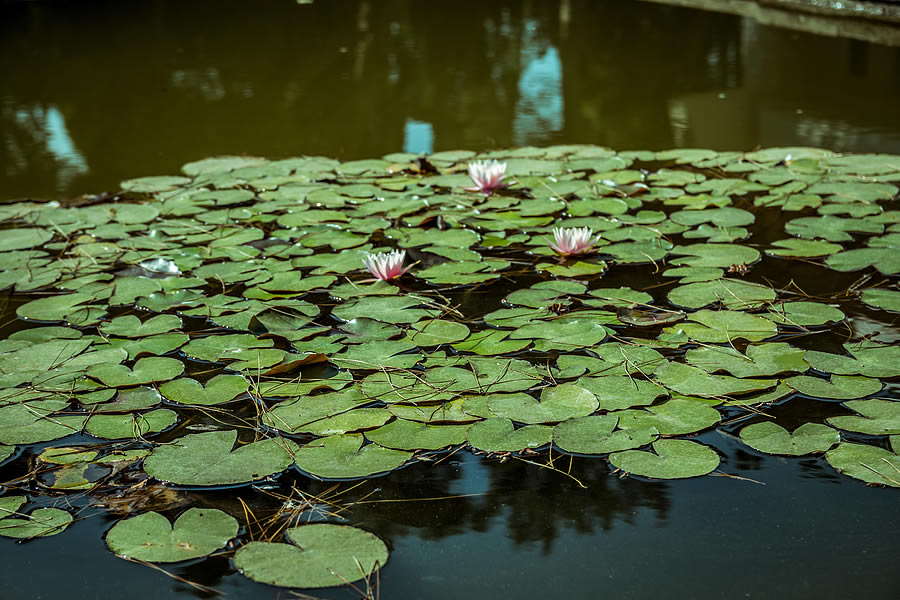
There are countless ponds and lakes in the United States, and especially the state of Georgia. Though ponds and lakes serve functional and aesthetic services, they must be maintained for best results. Managing aquatic plants in ponds and lakes is essential to maintain a healthy and balanced ecosystem. When aquatic plants become overgrown or invasive, they can disrupt the natural balance of the water body.
So, what are some common aquatic plant treatments that service providers like Aquatic Restoration have to offer? On this page, we go over some common aquatic plant treatments involved in pond and lake management.
The most obvious thing that comes to mind is getting in there with some equipment to physically remove excess aquatic plants from the water. Harvesting these plants helps control the overgrowth of plants like water lilies, cattails, and duckweed – and it’s the traditional way to manage aquatic plants.
We might also use bottom barriers. Installing physical barriers on the bottom of the water body can prevent the growth of specific aquatic plants by blocking sunlight and access to nutrients.
Progress in chemistry and biology has also equipped us with tools to manage and treat aquatic plant growth.

Herbicides are chemical substances that are used to selectively kill or control specific types of aquatic plants. Algaecides, meanwhile, are used to control excessive algae growth, which can lead to water quality problems. They are typically applied to target harmful algal blooms. These chemicals are applied according to regulations and guidelines to minimize harm to the environment and other aquatic life.
In the biological realm, we can introduce herbivorous fish. Certain fish species, like grass carp, can be introduced to consume and control aquatic plants. However, this approach must be carefully managed to prevent overgrazing and ecological imbalance.
Moverover, reducing the amount of nutrients, primarily phosphorus and nitrogen, into the water body can help control excessive plant growth. This can be achieved through practices like buffer zones, erosion control, and the use of nutrient-absorbing plants.
There is no silver bullet for optimal aquatic plant removal. The professionals at Aquatic Restoration combine various methods of plant control, such as mechanical, chemical, and biological, in a coordinated manner to achieve long-term, sustainable results while minimizing environmental impacts. Each property is unique, and our specialists will design the ideal treatment plan for your pond or lake. To get the ball rolling, call Aquatic Restoration and schedule a consultation with a member of our team today.
Regularly monitoring the water body's plant growth and overall health is crucial to detect issues early and adjust management strategies accordingly. If you have a lake management team, then make sure they are regularly checking up on the pond or lake. If you’d like to hire specialists, then call Aquatic Restoration to get started with a consultation or an on-site visit. Let’s work together to make the most out of our bodies of water. We look forward to taking your call.
Lake and pond dredging is an essential maintenance task that helps to improve water quality, restore depth and capacity,…
There’s a lot that goes into managing a lake. Beyond the aesthetics, it’s important to maintain ecological balance and…
Excessive algal growth is a serious threat to lakes and ponds. Left unchecked, algal blooms can deplete oxygen levels and…
Dredging is the removal of accumulated sediment and debris from the bottom of a lake or pond. This process is…
Pond and lake owners deal with a wide range of issues, including algae blooms, aquatic weed infestations, poor water clarity,…